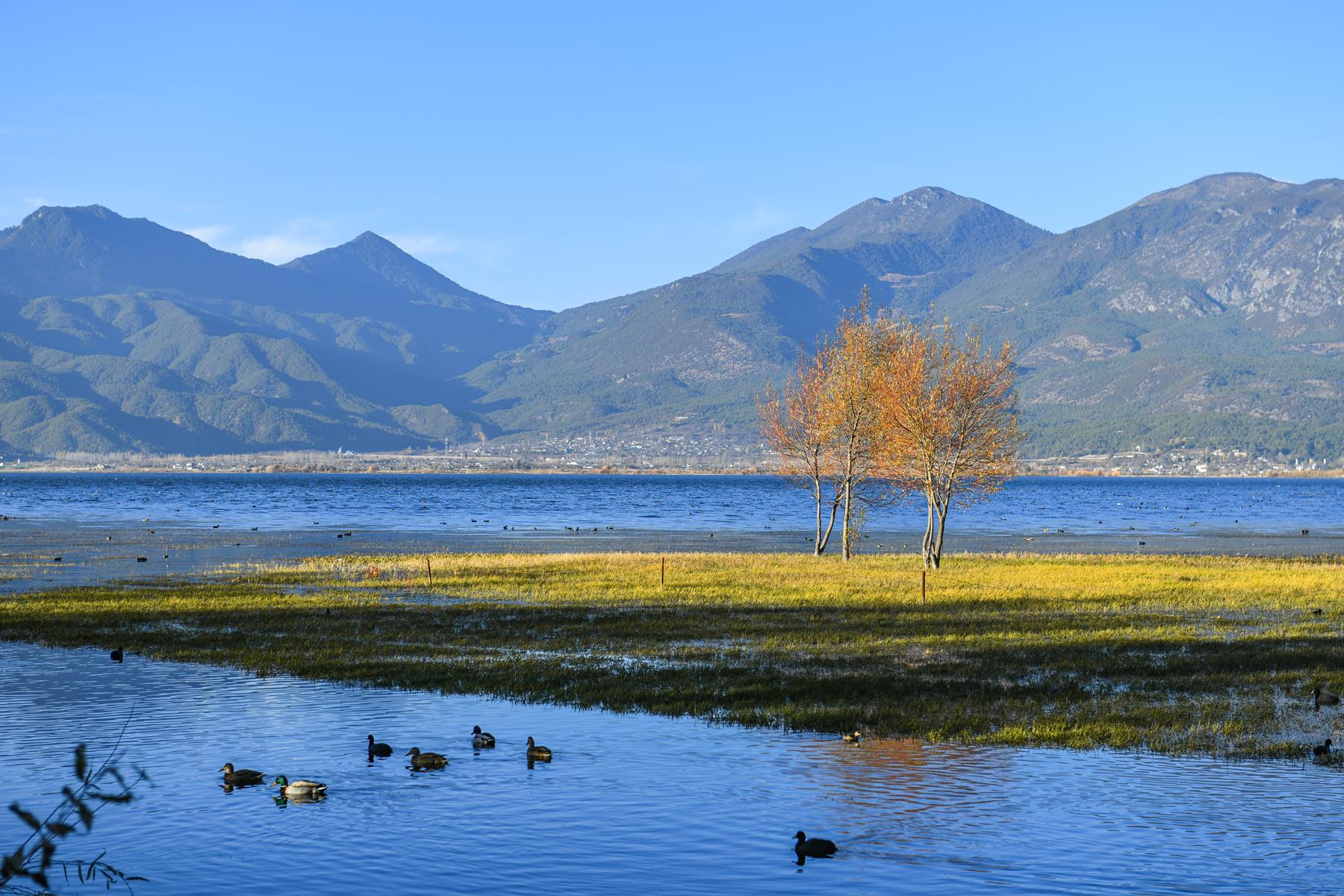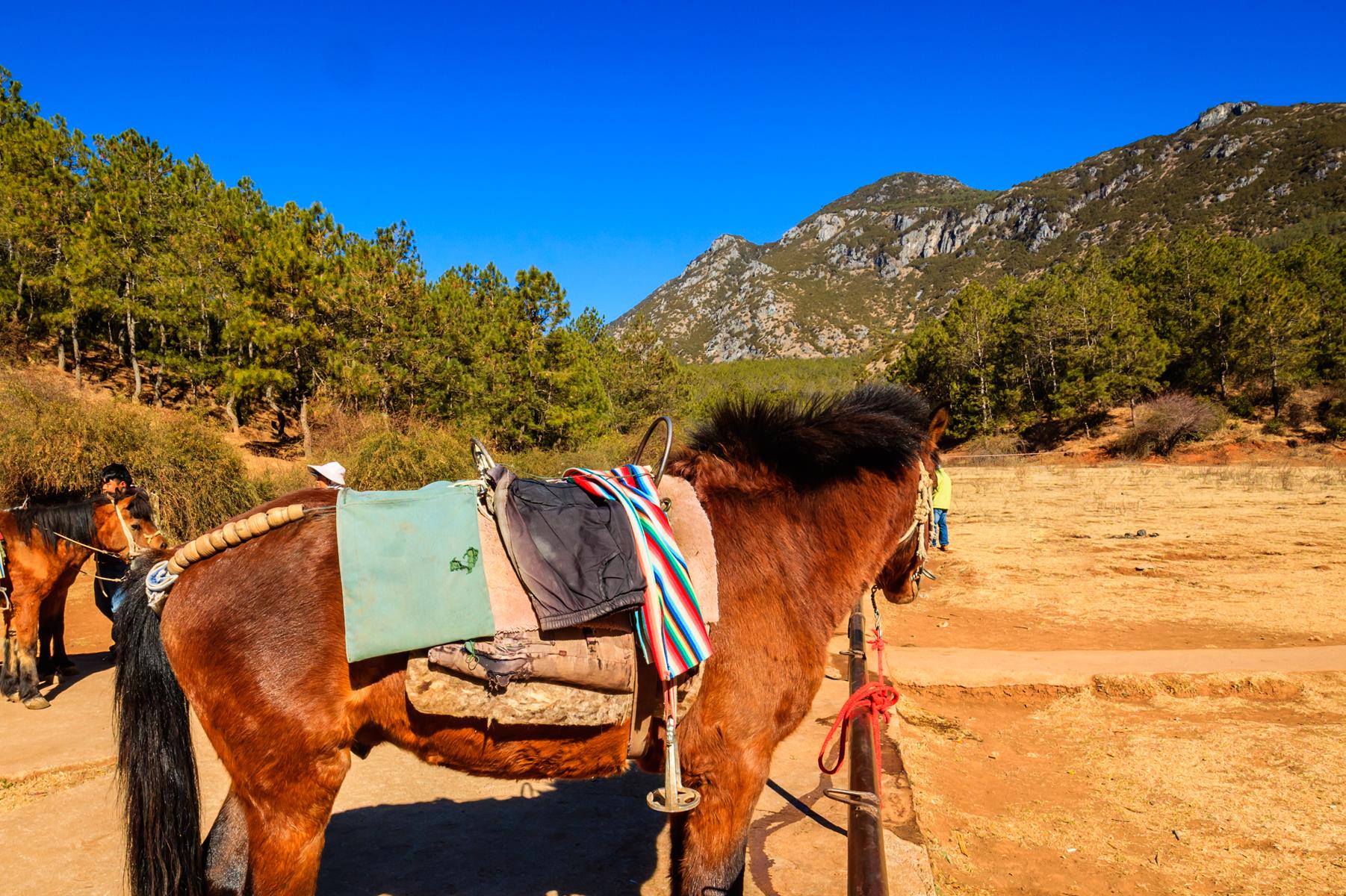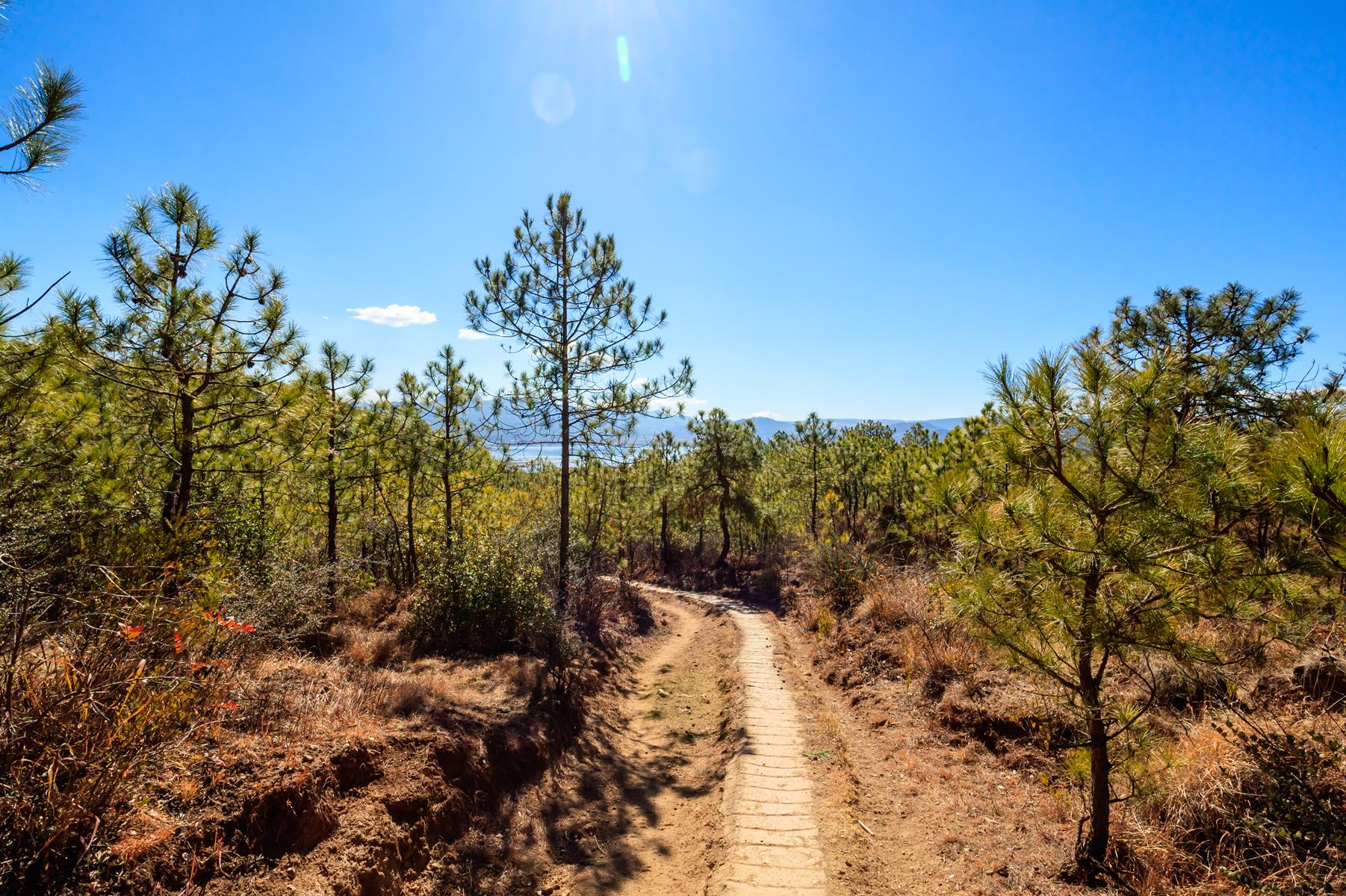



Located on the southern slope of the Jade Dragon Snow Mountain, just 10 km (6.2 miles) from Lijiang Old Town, Lashihai Lake is an integral part of the Lijiang – Lashihai Plateau Wetland Nature Reserve. Established in 1998 by the local government, the reserve aims to preserve the crucial wetland habitat that surrounds the lake.
Covering an impressive 5,330 hectares, Lashihai Lake stands as the largest highland lake in the Lijiang region. Sitting at an altitude of 2,437 metres, it is essentially a lake formed by the Lashi Dam. Not only does this picturesque lake boast stunning natural landscapes, but it also serves as a paradise for migratory birds, attracting thousands of them each winter. It is worth noting that Lashihai Lake holds historical significance as it marks the origin of the Ancient Tea Horse Road.
The grassy marshland lining the lake's embankment acts as an ideal breeding ground for a variety of plants, fishes, shellfish, and river snails. Its lush vegetation and abundant water create a favorable habitat for a diverse range of wetland animals and plants. During early winter, numerous wild birds make their way here from colder northern regions. They seek rest in the grassy areas and forage for food in the nearby streams.
Remarkably, Lashihai Lake hosts approximately 140,000 migratory birds throughout the winter, with a total of 165 bird species observed within its vicinity. As one of the most important habitats for over 57 species of migratory birds, it boasts the highest water bird species diversity among all the lakes in Northwest Yunnan. Notably, the lake provides a safe haven for protected migratory bird species such as the black-necked crane, whooper swan, and black stork. These birds rely on the lake's abundant local crops, aquatic plants, and the presence of seven different fish species. Additionally, Lashihai Lake is home to the Class III protected water lily, which represents one of the 47 aquatic plant species thriving within the lake.
Beyond its role as a scenic spot, Lashihai Lake holds the status of a provincial nature reserve due to its exceptional biodiversity. The grassy marshland and swamp areas provide a nurturing habitat for wetland animals and plants. During the onset of winter, a multitude of wild birds seek refuge in these areas, escaping the harsh conditions of their northern habitats. The warm climate of Lashihai Lake ensures their survival throughout the long winter, and as spring arrives and flowers bloom, the birds depart for the north to reproduce.
In conclusion, Lashihai Lake stands as a true haven for wildlife and natural beauty. Its breathtaking landscapes, rich biodiversity, and significance as a migratory bird sanctuary make it a must-visit destination for nature enthusiasts and those seeking a deeper connection with the natural world.
Birdwatching Paradise: Lashihai Lake
Lashihai Lake, blessed with a monsoon climate, has undergone a transformation from a seasonal lake to a plateau lake with a regulated water level following the construction of a dam. This alteration has turned the lake into a haven for migratory birds seeking refuge during the winter months. The warm climate of the region ensures the safety and survival of these birds throughout the long winter. As spring arrives and the landscape blossoms with flowers, the birds bid farewell to Lashihai Lake and embark on their journey northward for reproduction.
For visitors, the optimal time to indulge in birdwatching is from December to February. Renting boats to traverse the lake offers a tranquil and leisurely experience for sightseeing and observing the avian inhabitants.
Exploring the Ancient Tea Horse Road on Horseback
Another enticing option for visitors is to explore the surroundings of Lashihai Lake on horseback or by bike. Being the origin of the Ancient Tea Horse Road, the lake holds historical significance. The Ancient Tea Horse Road, akin to the renowned Silk Road, served as a crucial trade route in southern China. Along this route, Yunnan horses played a central role as the primary means of transportation. Today, visitors have the opportunity to partake in horseback riding, experiencing a segment of this ancient road while immersing themselves in the local ethnic culture.
Embarking on a horseback ride to explore the Ancient Tea and Horse Road is a must-try activity, providing an up-close encounter with the unique local culture. Differing from the tall and sturdy horses found on grasslands, Yunnan horses are smaller in size but excel at long-distance travel. This distinction adds a distinctive charm to the riding experience, allowing visitors to appreciate the novelty of the journey.
La City, Yulong Naxi Autonomous County, Lijiang City
1. Lashihai Lake is a destination that can be enjoyed throughout the year. However, the prime time to witness the spectacle of migratory birds is from December to February.
2. When it comes to hiring a car, it is advisable to directly approach the hostel owner or book through a reputable local tour agency. These services often encompass transportation to the lake, horse riding, and bird viewing tours. Booking directly with them can help you save money.
3. If you choose to travel to the lake by bus independently, be prepared to locate horse ranches and boat rentals on your own. There are 18 ranches available, but it can be challenging to determine which one offers the best experience. It is not recommended to rely solely on this method.
4. For bird watching, renting a boat is necessary. Each ranch now offers three horse-riding routes and one boat route.










